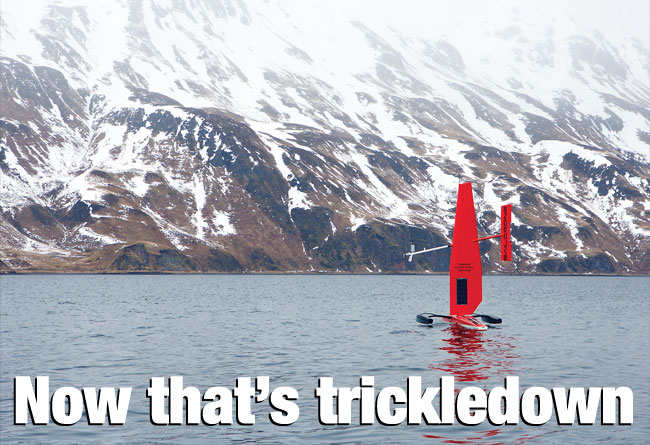
Only rarely is a radical technology used to break a major world record then developed for mainstream or even commercial use. Think round-the-world flight, land speed record, even the remarkable Vestas Sailrocket. But when Richard Jenkins smashed the world speed record using windpower he was already thinking about a much bigger picture
Back in 2012, when I proposed the Saildrone concept to a panel of ocean scientists, their reply was ‘if you can do it, it is a game-changer, but it’s impossible’. That was, of course, the ultimate incentive to prove otherwise. After the successful crossing of our early prototype from San Francisco to Hawaii in 2013, 2,200nm in 32 days, the same panel conceded that it ‘may be possible to cross an ocean, but you’ll never measure anything useful for ocean science, you can’t take precise measurements from a moving platform’.
Once again I had been handed the incentive and so I reached out to some of the world’s best oceanographic institutes to ask them what they wanted to measure, and how we should go about it.
While everyone had somewhat over - lapping requests, they all pointed to the Pacific Marine Environmental Laboratory (PMEL, the engineers behind NOAA’s ocean and atmospheric measurements) as the ‘gold standard’ for ocean data.
We invite you to read on and find out for yourself why Seahorse is the most highly-rated source in the world for anyone who is serious about their racing.
To read on simply SIGN up NOW
Take advantage of our very best subscription offer or order a single copy of this issue of Seahorse.
Online at:
www.seahorse.co.uk/shop and use the code TECH20
Or for iPad simply download the Seahorse App at the iTunes store


